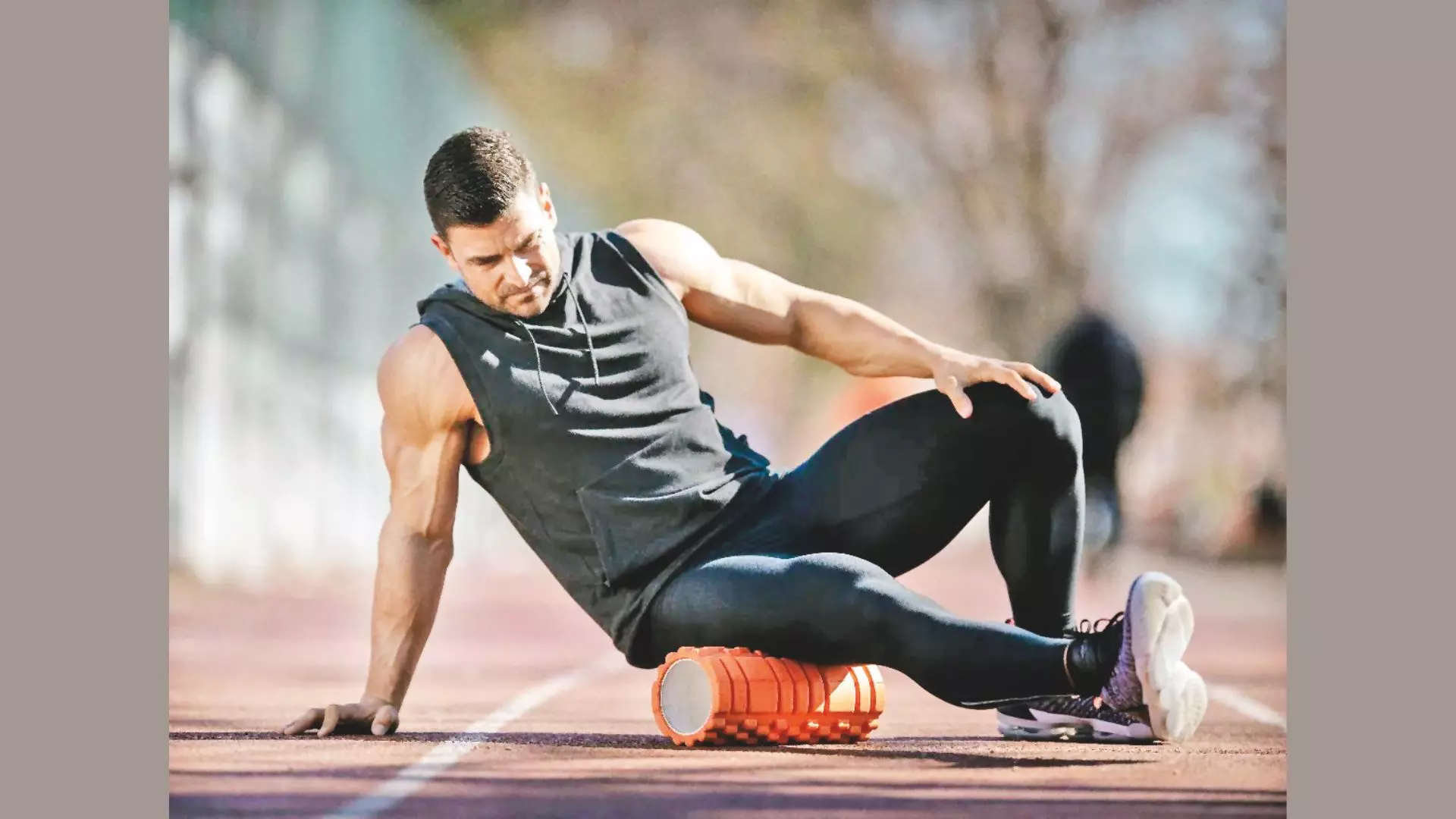Roll your way to fitness
Adding value to the workout regimes of athletes as well as regular gym goers, foam rollers help increase flexibility, improve blood circulation and boost strength

Roll your way to fitness with a lightweight, cylindrical tube of elastomeric (a rubber-like, stretchable, elastic material with a property to change its shape and return to its former original form once the mechanical stress or an external deforming force is removed. It is made up of long molecular chains of polymers) foam on a softer surface atop a mat or a carpet close to a wall on minimal floor space. Foam rolling workout is much in demand both at home and in offices to lift employees’ physical and mental efficiency.
Less is More
“Limited space is required to lie down freely and get on with the foam rolling activity. A foam roller is the sole equipment needed to perform the exercises. It is a long firm tube made of foam, used for stretching, relaxing and massaging muscles. Besides, a mat is essential to mitigate injury risks, especially on rough, solid floors. Proper body alignment is necessary. Slow and deep breathing is recommended while rolling back over the trigger points for as long as a minute and half. Muscle movement and stretching is advisable post foam rolling,” says fitness expert T.Vinesh, who handles head strength and conditioning at the Institute of Sports Sciences and Technology (ISST), Pune.
Clutter Cutter
The foam roller is used for massaging one’s own muscles. “Foam rolling has the ability to untangle the knots and trigger points by disintegrating adhesions between muscles and fascia. Adhesions are inflexible areas caused by muscle imbalance, overuse, injuries and so on,” he explains.
Sports Friendly
Foam rolling favours sportspersons, especially athletes. It bolsters suppleness and elasticity of a human body, thus curbing injury hazards. It fixes muscle soreness and tightness, also known as delayed-onset muscle soreness (DOMS), resulting in discomfort in muscles post a heavy-duty physical activity. “Foam rolling can help athletes heal from niggles and energy-draining exercises, and ultimately improve their muscular performance,” reports Vinesh.
Fitting Foam Rolling Outfit
To opt for the ideal costume for foam rolling, Vinesh suggests wearing cosy clothing that allows one to relax in and move conveniently, tailored to one’s comfort zone. Loose tops and shorts can get caught under the foam roller. If one has a loose tank top or a T-shirt, it’s better to tuck it into a pair of leggings or shorts. “If you use a smooth roller (without much of a grippy texture), then avoid wearing your slipperiest leggings and tops. After all, you want to move spontaneously on your foam roller without slipping, right?” alerts the trainer.
Pain Manager
Rolling helps manage fibromyalgia. “It is a long-lasting disorder that induces pain and tenderness throughout the body as well as fatigue. Symptoms include acute body pang, weariness, trouble sleeping, headaches, lower abdominal pain or cramps, depression, etc.,” says Vinesh. By slowly rolling the affected areas, one can experience subsided muscle soreness, expanded range of motion and effective management of fibromyalgia symptoms among other benefits.
Solution to adhesion
Myofascial adhesions are scar tissues (a fibrous tissue that forms when the body heals automatically after an injury, surgery or a disease having destroyed its normal tissues. Scar tissue appears when the body replaces the dead or damaged skin with a new tissue and can grow anywhere on the body)that instigate pain, low mobility and feebleness. They are caused by trauma or injury, such as inflammation, surgery, radiation therapy or infection. Repetitive activities, such as lifting heavy objects, can also produce adhesions.
“Foam rolling can help address myofascial adhesions by softening and lengthening fascia, breaking down the scar tissue, restoring soft tissue extensibility and trimming muscle tension,” informs the instructor.
